| Class: | angiosperms |
| Order: | Ranunculales |
| Family: | Hypecoaceae |
| Genus: | Hypecoum |
| Scientific name: | Hypecoum lactiflorum (Kar. et Kir.) Pazij |
| Name acc. to: | Gubanov 1996 |
| Herbar: | list records    |
| Synonym: | Chiazospermum lactiflorum Kar. et Kir. (acc. to Grubov 1982) |
| Description: | Like C. erectum but corolla pinkish-white, stigmas short, slightly divergent and silique with thick and declined septae. |
| Comments: | Within the genus flowering plants are easy to differentiate. |
| Link to Flora of China: | http://www.efloras.org/browse.aspx?flora_id=2&name_str=Hypecoum |
| open map in a new window |  |
| Habitat: | Bottom of sayrs and streams, pebbly shoals, alkaline waterside meadow plots, bels in desert-steppe regions (Grubov 2001). |
| Habit (i)general appearance of a plant | |
| Growth form: (i)Herb, shrub, tree or climber. | annual (i)Completing its life cycle within one year or one growing season; roots weak and thin  inherited by genus Hypecoum: annual inherited by genus Hypecoum: annual
herb (i)Herbaceous, erect plant, up to 2m high, mostly with a leafy shoot; if perennial, shoots die to the ground each season, shoots are not woody
example: Artemisia pectinata   inherited by family Hypecoaceae: herb inherited by family Hypecoaceae: herb  inherited by genus Hypecoum: herb inherited by genus Hypecoum: herb
|
| Size of plant: (i)Attention: use flowering or fruiting specimens to assess plant height (many biennial plants possess only a basal rosette in the first year). | from 100 mm to 250 mm  inherited by genus Hypecoum: inherited by genus Hypecoum:
from 250 mm to 600 mm  inherited by genus Hypecoum: inherited by genus Hypecoum:
|
| Parasite status: (i)Is the plant a half- or full parasite? | no parasite/saprophyte (i)Plant fully autonomous, leaves with chlorophyll
example: Most plants, Ranunculus  inherited by family Hypecoaceae: no parasite/saprophyte inherited by family Hypecoaceae: no parasite/saprophyte
|
| Water or terrestrial plant: (i)Where do the plants grow? | terrestrial (i)Plant grows on dry land
example: Orostachys spinosa  inherited by family Hypecoaceae: terrestrial inherited by family Hypecoaceae: terrestrial
|
| Leaf (i)expanded, usually photosynthetic organ of a plant (including phylloclades) | |
| Leaf development: (i)Structure and development of leaves. | with green leaves (i)Plant with green leaves  inherited by genus Hypecoum: with green leaves inherited by genus Hypecoum: with green leaves
|
| Leaf arrangement: (i)Arrangement of leaves at the stem. | basal rosette (i)Leaves positioned at the base of the stem; stem often without leaves, no visible internodes (but flowers often on erect stems, and these may have few leaves)
example: Limonium, Potentilla, Plantago; also used in Liliales with basaly crouwded leaves (Tofieldia, Zigadenus etc.)   inherited by genus Hypecoum: basal rosette inherited by genus Hypecoum: basal rosette
|
| Simple or divided leaves: (i)Are the leaves simple or completely divided in several parts? Blade of the leaf entire or (more or less) deeply dissected. Attention: There are various appearances of the leaf margin (from entire to toothed and lobed). Here, we ignore this and ask only for dissections that separate the leaf for more than one third of its length or width, whatever is smaller. Sometimes, it is difficult to tell apart compound leaves from a shoot system with simple leaves: look for stipulae and/or axillary buds at the ground of the leaves: if only some possess these structures, the others are most likely leaflets of a compound leaf. | compound (i)Composed of several similar parts  inherited by genus Hypecoum: compound inherited by genus Hypecoum: compound
pinnate (i)With leaflets on both sides of an axis, at least 2 pairs or more
example: Onobrychis   inherited by genus Hypecoum: pinnate inherited by genus Hypecoum: pinnate
|
| Petiole: (i)Leaf divided into stalk (petiole) and blade. | with (i)Leaves with petiole (stalk)   inherited by genus Hypecoum: with inherited by genus Hypecoum: with
|
| Leaf colour upper side: (i)Shades of green on the leaf, upper side. | green (i)Clear green
example: Tribulus terrestris  inherited by genus Hypecoum: green inherited by genus Hypecoum: green
|
| Leaf colour lower side: (i)Shades of green on the leaf, lower side. | green (i)Clear green, in most species
example: Angelica decurrens  inherited by genus Hypecoum: green inherited by genus Hypecoum: green
|
| Leaf veination: (i)Arrangement of the main veins of a leaf. | pinnate (i)One main vein, several side veins, sometimes inconspicuous
example: Cicerbita     inherited by family Hypecoaceae: pinnate inherited by family Hypecoaceae: pinnate
|
| Flower (i)reproductive portion of the plant, consisting of sepals, petals, stamens, and pistils | |
| Flower appearance and pollination: (i)General appearance of the flower. | attractive, animal-pollinated (i)attractive and coloured flowers, mostly large, attracting surely animals
example: Trollius, Rosa, Chamaerhodos  inherited by genus Hypecoum: attractive, animal-pollinated inherited by genus Hypecoum: attractive, animal-pollinated
|
| Flower colour: (i)Attention: assess colour of the most colourful parts of the flower, but not of the stamens; be aware of single plants with a mutation (mostly white) on flower colour. | white (i)Most plants of the population white
example: Pleurospermum, Maianthemum
pink (i)Between red and white
example: Centaurium
|
| Perianth arrangement: (i)Attention: in some plants, flowers may be dimorphic in different ways (dioecious or gynodioecious). If flowers vary, record the characters of the most showy flowers. | double, different (i)Two types of perianth leaves, differently coloured (sepals: outer periant leaves, usually greenish, and petals: inner perianth leaves, usually coloured)
example: Parnassia    inherited by genus Hypecoum: double, different inherited by genus Hypecoum: double, different
|
| Diameter of flower: (i)Diameter of flower or flower head. | from 10 mm to 20 mm (i)
example: Potentilla  inherited by genus Hypecoum: inherited by genus Hypecoum:
|
| Flower symmetry: (i)Symmetry of the perianth leaves. Attention: to assess this character, look on sepals, petals and stamens, but neglect carpels and ovary. | radiary, regular (actinomorphic) (i)More than two axis of symmetry
example: Saxifraga: 5; Iris: 3   inherited by genus Hypecoum: radiary, regular (actinomorphic) inherited by genus Hypecoum: radiary, regular (actinomorphic)
dicentric (i)Two axis of symmetry, take care of the arrangement of stamens
example: Hypecoum, Brassicaceae: six stamens with two in the outer circle   inherited by genus Hypecoum: dicentric inherited by genus Hypecoum: dicentric
|
| Flower form: (i)common forms of flowers ? Veronica | simple (flat) - Do not confuse with inflorescences as in some Asteraceae (i)Petals spread out, flower appearing flat
example: Mollugo, Trientalis, Pulsatilla, Saxifraga   inherited by genus Hypecoum: simple (flat) - Do not confuse with inflorescences as in some Asteraceae inherited by genus Hypecoum: simple (flat) - Do not confuse with inflorescences as in some Asteraceae
|
| Sepal number: (i)Number of sepal leaves (outer perianth leaves, calyx leaves, mostly greenish). Attention, this character applies only for flowers separated in sepals and petals, thus excluding most monocots. Be aware of the bracts (involucral leaves) of Asteraceae flowerheads, do not qualify these as sepals! Be also aware in Rosaceae is often an epicalyx developed, in this case count all parts. | 2 (i)
example: Papaveraceae  inherited by genus Hypecoum: 2 inherited by genus Hypecoum: 2
|
| Petal / Tepal number: (i)Number of petal leaves (inner perianth leaves, usually coloured). | 4 (i)
example: Galium  inherited by genus Hypecoum: 4 inherited by genus Hypecoum: 4
|
| Petal / Tepal fusion: (i)To which degree are the petal leaves connected? Petals sympetalous. | free (i)all petal leaves separate from each other
example: Anthriscus  inherited by genus Hypecoum: free inherited by genus Hypecoum: free
|
| Spur: (i)A hollow, slender, sac-like appendage of the perianth leaves, storing nectar. | no spur (i)Flower without appendage
example: Peganum  inherited by genus Hypecoum: no spur inherited by genus Hypecoum: no spur
|
| Stamen number: (i)Attention: We ask for the reproductive organs of the flower dispersing pollen. Count only fully fertile stamens, not staminodia (e.g. Parnassia). | 4 (i)Extremely rare, may be absent
example: Plantago  inherited by genus Hypecoum: 4 inherited by genus Hypecoum: 4
|
| Pistil number: (i)Number of pistils (female floral organs: style, if developed; stigma and carpels/ovary together build the pistil). | 1 (i)One carpel, but clearly one stigma
example: Pyrola, Primula, Alyssum  inherited by genus Hypecoum: 1 inherited by genus Hypecoum: 1
|
| Carpel number: (i)Number of carpels (carpel: forming a simple pistil or part of a compound pistil, modified leaf). | 2  inherited by genus Hypecoum: 2 inherited by genus Hypecoum: 2
|
| Carpel fusion: (i)To which degree are the carpels (modified leaf forming simple pistil or part of a compound pistil) fused. | fused (i)Carpels united into an ovary, only styles are free
example: Malus, Berberis  inherited by genus Hypecoum: fused inherited by genus Hypecoum: fused
|
| Style number: (i)Portion of the pistil connecting the stigma to the ovary. | 1  inherited by genus Hypecoum: 1 inherited by genus Hypecoum: 1
|
| Stigma number per style: (i)Number of stigmas per style. | 2 (i)Two stigmas, resulting from two fused carpels with or without developed style   inherited by genus Hypecoum: 2 inherited by genus Hypecoum: 2
|
| Ovary position: (i)For entirely or partly fused carpels, describe their position in relation to the insertion point of perianth leaves (best done by doing a longitudinal section of a flower). | superior (hypogynous) (i)Base of carpels attached above insertion point of perianth leaves, carpels free or fused
example: Delphinium, Anemone    inherited by order Ranunculales: superior (hypogynous) inherited by order Ranunculales: superior (hypogynous)
|
| Sex: (i)Distribution of male and female organs among flowers, only most commonly cases. | bisexual, hermaphrodite (i)All or nearly all flowers of a plant with male and female parts
example: Haplophyllum, Chenopodium  inherited by genus Hypecoum: bisexual, hermaphrodite inherited by genus Hypecoum: bisexual, hermaphrodite
|
| Inflorescence (i)flowering part of a plant, describes the arrangement of the flowers on the flowering axis | |
| Inflorescence: (i)Structure of the inflorescence. | Flowers in inflorescence (i)No solitary flowers  inherited by genus Hypecoum: Flowers in inflorescence inherited by genus Hypecoum: Flowers in inflorescence
Simple inflorescences (i)Flowers sessile on a main shoot or on short to long not branched side shoots
example: Polygonum bistorta    inherited by genus Hypecoum: Simple inflorescences inherited by genus Hypecoum: Simple inflorescences
|
| Appearance: (i)Outer look of the inflorescence. | terminal (i)Inflorescence is the highest point of the plant and may consist of a single flower only
example: Cypripedium, Rhaponticum, Ligularia sibirica, Echinops  inherited by genus Hypecoum: terminal inherited by genus Hypecoum: terminal
|
| Inflorescence type: (i)Types of inflorescence. Attention: We here ask for the botanical nomenclature of inflorescences, which is sufficiently complicated. Tick only, if you are certain, or tick all inflorescence types that appear similar of these of the plant in question. | others (in traits_comments nicht aufgeführt) (i)Not as above
example: Sparganium: globose capitate  inherited by genus Hypecoum: others (in traits_comments nicht aufgeführt) inherited by genus Hypecoum: others (in traits_comments nicht aufgeführt)
|
| Fruit (i)the seed bearing organ, with or without adnate parts; a ripened ovary and any other structures which are attached and ripen with it. Aggregate fruits are handled like simple fruits for determination. | |
| Consistency: (i)Fleshy fruits or dry fruits, see dispersal adaptations for further classification. | dry (i)With a dry outer shell, no fleshy parts, but seed (embryo) could be edible  inherited by genus Hypecoum: dry inherited by genus Hypecoum: dry
|
| Type of fruit: (i)Common fruit types (including pseudocarp). | Solitary fruits (i)     inherited by family Hypecoaceae: Solitary fruits inherited by family Hypecoaceae: Solitary fruits
Dehiscent fruits (i)Fruits open along a longitudinale line (except silicula)  inherited by family Hypecoaceae: Dehiscent fruits inherited by family Hypecoaceae: Dehiscent fruits
silique (i)Dry fruit, opening with two valves and a separating wall inbetween
example: Brassicaceae, Hypecoum    inherited by family Hypecoaceae: silique inherited by family Hypecoaceae: silique
|
| Opening of fruit: (i)Mode of dehiscence at maturity to release seeds. | opening / dehiscent (i)Dry? Fruits opening with different types  inherited by genus Hypecoum: opening / dehiscent inherited by genus Hypecoum: opening / dehiscent
|
| Dispersal: (i)Appearance of fruit or seed (if single) and adaptations to dispersal. | Otherwise (i)All parts dry, no conspicuous adaptations  inherited by genus Hypecoum: Otherwise inherited by genus Hypecoum: Otherwise
|
| Seed number: (i)Estimate the number of seeds per fruit, if recognizable seeds are in the fruit (in rare cases a fruit may contain one seeded nuts: rose hip, carex). | 7-50 (i)Numerable, but may be counted
example: Vaccinum: multi-seeded berry, Ptilotrichum: few-seeded siliqua  inherited by genus Hypecoum: 7-50 inherited by genus Hypecoum: 7-50
|
| Hairs | |
| Has hairs?: | no hairs, glabrous  inherited by genus Hypecoum: no hairs, glabrous inherited by genus Hypecoum: no hairs, glabrous
|
| Root / shoot below ground (i)plant part below ground (in most cases), including below ground shoots, without leaves | |
| Root type: (i)Organisation of the roots. | allorhizous (i)Plant with a conspicuous tap root, one larger tap root with side roots
example: Dicotyledonae  inherited by order Ranunculales: allorhizous inherited by order Ranunculales: allorhizous
|
| Distribution (i)region where the plant is likely to be found | |
| Distribution (Veg. Zones): (i)acc. to Grubov 1952 | Khangai (i)In distribution data often named as '3' 
Mongol-Daurian (i)In distribution data often named as '4' 
Khobdo (i)In distribution data often named as '6' 
Mongolian Altai (i)In distribution data often named as '7' 
Middle Khalkha (i)In distribution data often named as '8' 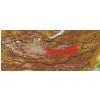
East Mongolia (i)In distribution data often named as '9' 
Depression of Great Lakes (i)In distribution data often named as '10' 
Valley of Lakes (i)In distribution data often named as '11' 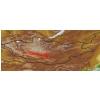
East Gobi (i)In distribution data often named as '12' 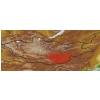
Gobi-Altai (i)In distribution data often named as '13' 
Dzungarian Gobi (i)In distribution data often named as '14' 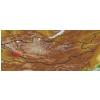
Transaltai Gobi (i)In distribution data often named as '15' 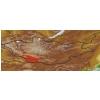
Alashan Gobi (i)In distribution data often named as '16' 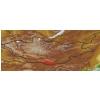
acc. to: Gubanov 1996 |
| Distribution Khangay: (i)acc. Flora Khangaya 1989 | I
|